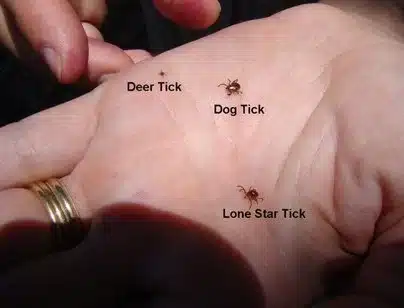Knowing what ticks look like can protect you and your family from serious tick-borne diseases. These small arachnids are more than just a nuisance - they carry dangerous pathogens that can cause lasting health problems. I learned this firsthand during a road trip when I stepped into a field for just a few minutes and came back with four ticks on my leg.
Additionally, I’ve seen the real impact of tick-borne illness up close. A family member and former co-worker both developed Lyme disease, which seriously affected their health and daily lives. Because of these experiences, I understand how important it is to identify ticks quickly and treat for them properly.
Tick Biology and Physical Features
Ticks are small arachnids with eight legs, putting them in the same family as spiders rather than insects. Adult ticks typically measure 2-5 millimeters when unfed, though they can swell to several times their original size after feeding.
The tick’s body consists of two main parts: the capitulum (head region) and the idiosoma (body). The capitulum contains the mouthparts, which include specialized structures for piercing skin and feeding on blood. The scutum, or hard plate, covers part of the tick’s back and helps distinguish different tick species.
Ticks go through three main life stages: larva, nymph, and adult. Each stage requires a blood meal to develop further. Larvae have six legs, while nymphs and adult ticks have eight legs. Understanding these life stages helps with proper tick identification.
Common Tick Species You Should Know
Black-Legged Tick (Deer Tick)
The deer tick (Ixodes scapularis) is the primary carrier of Lyme disease bacteria. These ticks are dark brown to black with reddish-brown abdomens when unfed. Adult females measure about 3 millimeters, while males are slightly smaller.
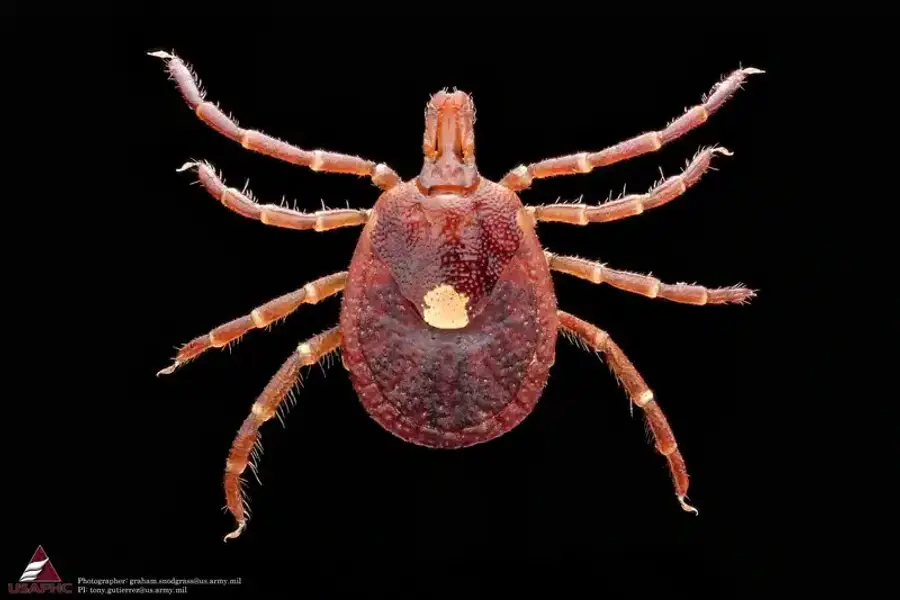
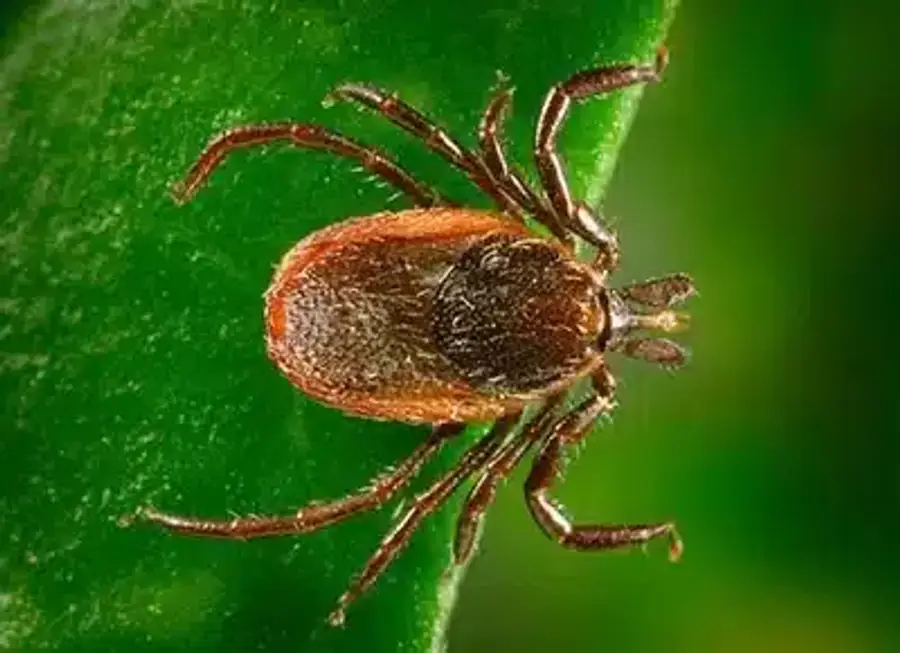
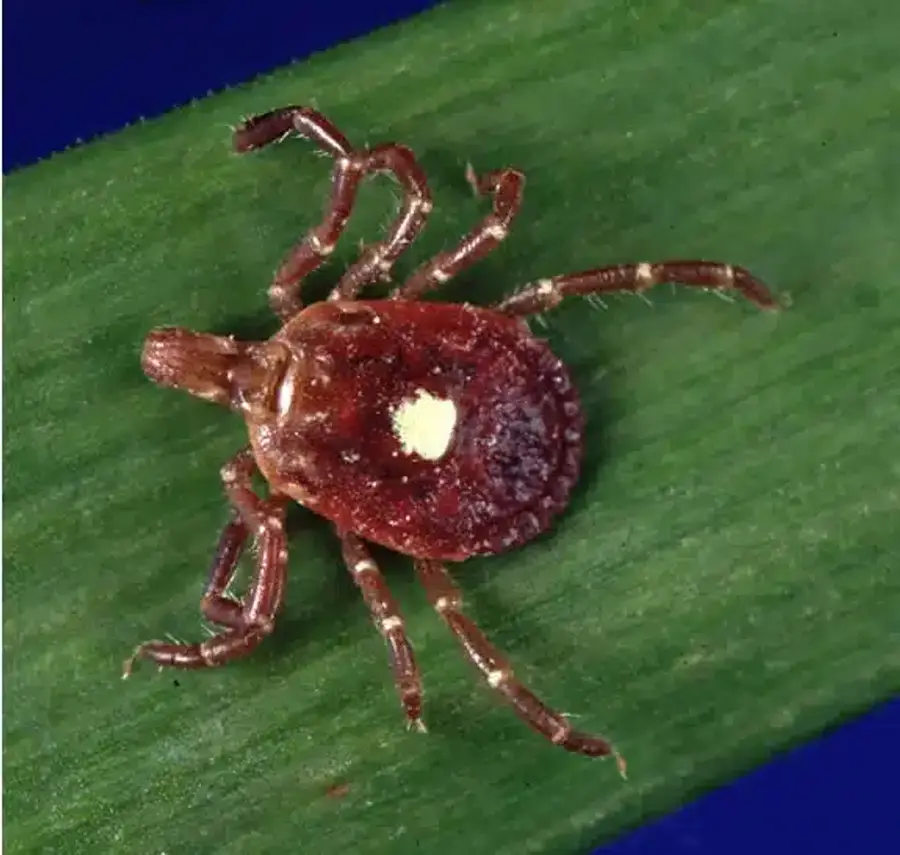
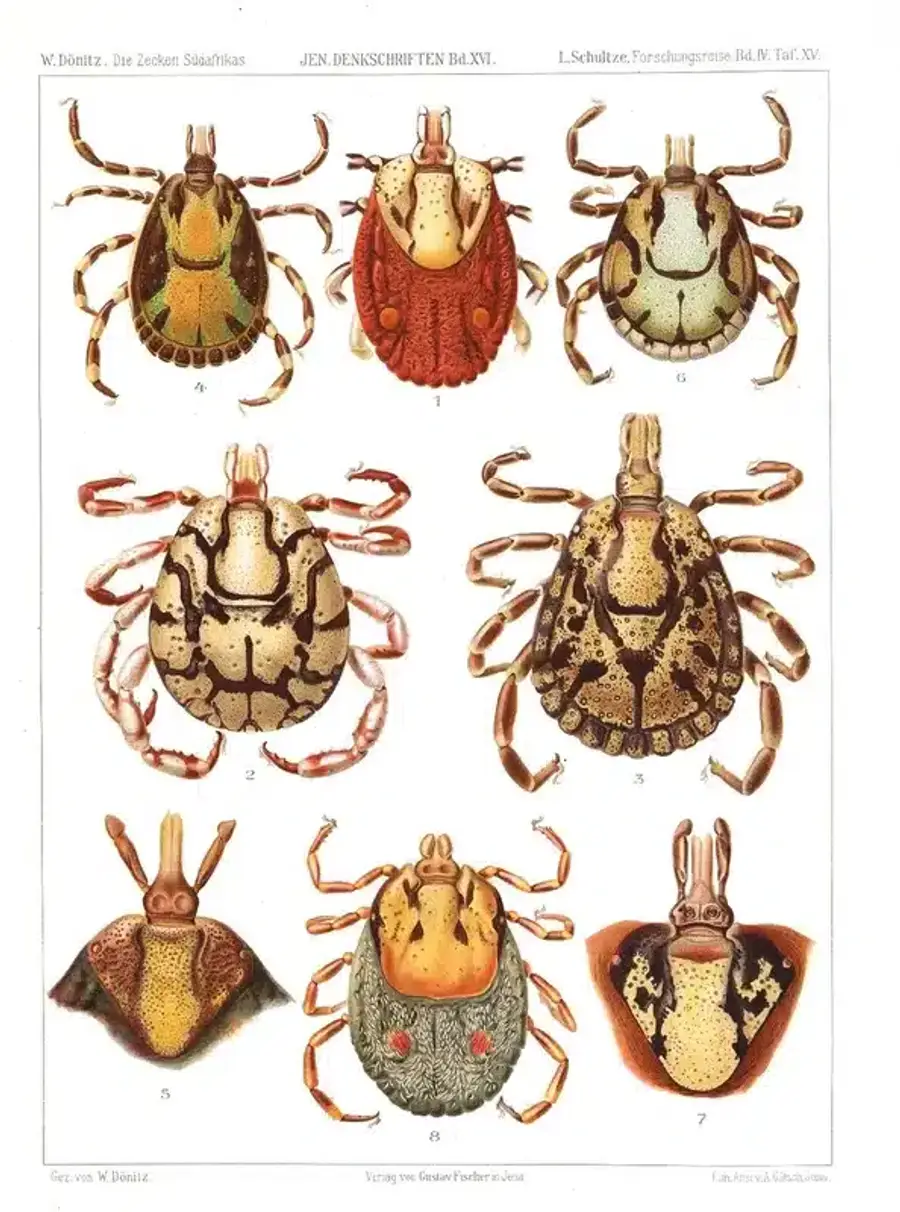
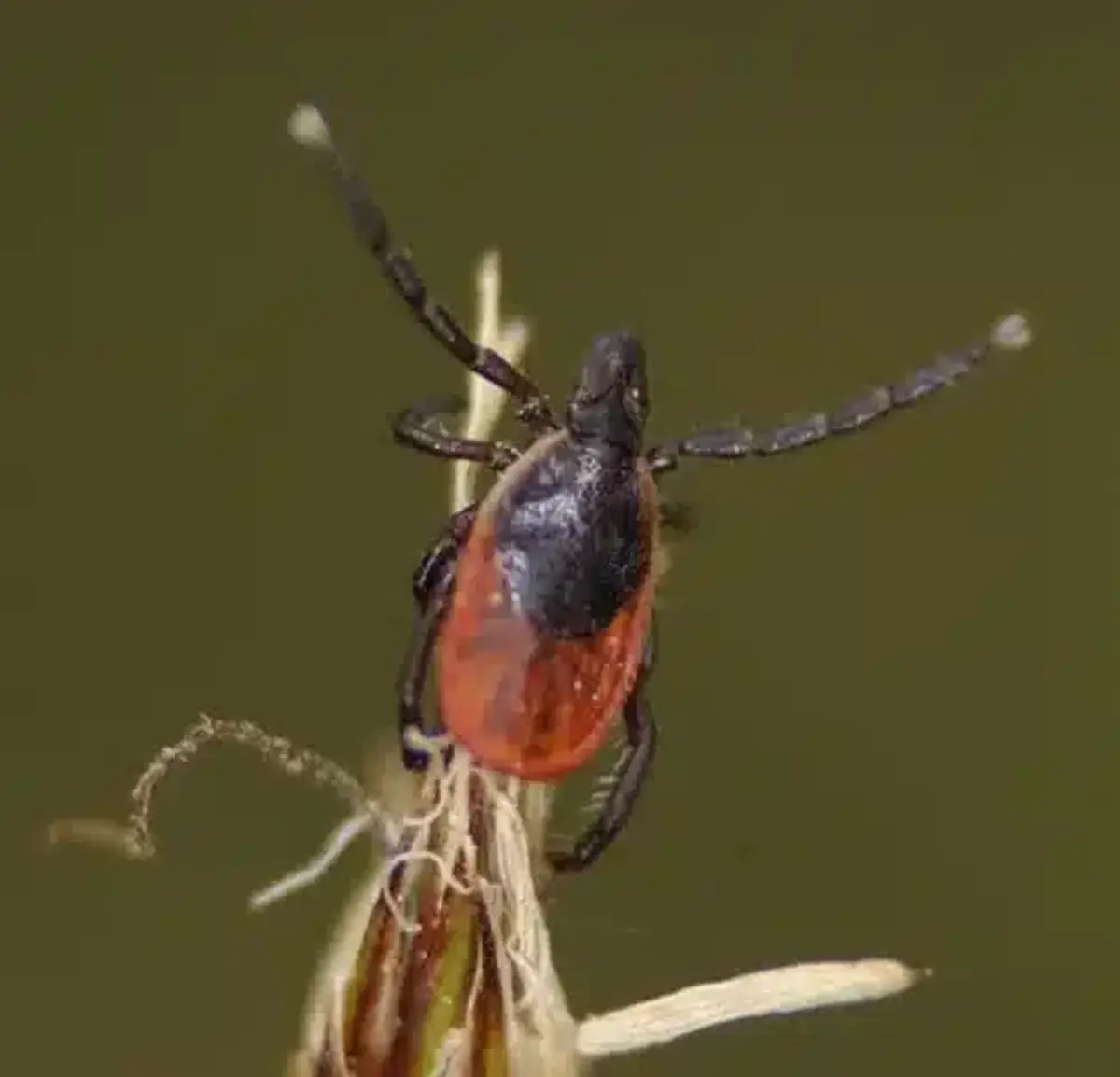
Nymph Ticks Are the Most Dangerous
Black-legged tick nymphs are particularly dangerous because they’re only about the size of a poppy seed. The nymph stage is most active during May through July, when people spend more time outdoors. According to the Centers for Disease Control, most human Lyme disease cases result from nymph bites.
Lone Star Tick
The lone star tick (Amblyomma americanum) gets its name from the distinctive white spot on the female’s back. These ticks are aggressive biters that will pursue hosts actively. Both the larva and nymph stages of lone star tick readily bite humans.
Lone star ticks are larger than deer ticks, measuring about 5 millimeters when unfed. They have longer mouthparts and are particularly active during warmer months.
Alpha-Gal Syndrome Risk
Lone star tick bites can cause alpha-gal syndrome, a serious red-meat allergy that develops after repeated exposure to the tick’s saliva.
American Dog Tick
The american dog tick (Dermacentor variabilis) displays ornate white markings on its scutum. These ticks primarily bite humans as adults, unlike some other tick species that bite in multiple life stages. They’re the main vector for Rocky Mountain spotted fever in our region.
Dog ticks prefer open areas with little tree cover. They’re most active during spring and early summer months. The american dog tick typically measures 5 millimeters when unfed.
Brown Dog Tick
The brown dog tick (Rhipicephalus sanguineus) is unique because it can complete its entire life cycle indoors. These ticks are uniform brown in color without distinctive markings. They mainly feed on dogs but will occasionally bite humans.
Soft ticks represent a different family entirely, with leathery bodies lacking the hard scutum. However, most human encounters involve hard ticks like those described above.
Tick Identification: How to Identify Ticks on Your Body
When you find a tick attached to your skin, you’ll notice several key features. The tick’s body appears dark and oval-shaped, with the head buried in your skin. You might see the tick’s legs moving, especially if it hasn’t been attached long.
Tick identification becomes easier with a magnifying glass. Look for the characteristic eight legs and hard, shield-like scutum. The Mayo Clinic recommends checking your entire body systematically after spending time outdoors.
Where Ticks Live and When They’re Active
Ticks live in humid environments with plenty of vegetation. They’re especially common in wooded areas, tall grass, and leaf litter. However, as I discovered during my road trip, ticks can be active in any grassy field or natural area.
Ticks found in residential areas often concentrate along the ecotone - the transition zone between maintained lawn and wilder vegetation. They climb onto grass blades and low shrubs, waiting to grab onto passing hosts.
Young ticks are most active during spring and early summer. Nymph stage ticks peak in May through July, while adult ticks remain active through fall and even warm winter days. This extended activity period means year-round vigilance is important.
How to Prevent Tick Bites
Personal Protection Strategies
Essential Tick Prevention Tips
Use EPA-approved repellents containing DEET, picaridin, or IR3535. Apply repellent to exposed skin and clothing according to label directions. Products containing 20-30% DEET provide several hours of protection.
Permethrin-treated clothing offers excellent tick protection. You can purchase factory-treated garments or apply permethrin sprays to your own clothes. This insecticide kills ticks on contact and remains effective through multiple wash cycles.
Wear protective clothing: Light-colored clothing tucked into socks makes it easier to spot ticks and prevents them from reaching your skin. Shower within two hours of coming indoors to remove any unattached ticks.
Property Management
Creating tick-safe zones around your home reduces exposure risk. Remove leaf litter and brush near play areas and patios. Keep grass cut short and create wood-chip barriers between lawn and wooded areas.
Ticks prefer warm, humid microclimates, so reducing moisture and improving air circulation helps. Basically, anything that makes your yard less hospitable to ticks will help protect your family.
What Ticks Look Like and What a Tick Bite Looks Like
A tick bite may look like a small red bump initially. Unlike a mosquito bite, tick bites typically don’t itch immediately. The bite site often appears as a small, dark center surrounded by mild redness.
Weeks after a tick bite, watch for expanding circular rashes that might indicate Lyme disease. This characteristic rash, called erythema migrans, appears in about 70-80% of Lyme disease cases. The rash typically expands outward from the bite location.
Some people develop localized reactions that cause skin irritation or swelling. However, many tick bites produce minimal immediate symptoms, making regular tick checks even more important.
Proper Tick Removal Techniques
Proper Tick Removal Steps
- Remove a tick as soon as you discover it attached
- Use fine-tipped tweezers to grasp the tick as close to the skin as possible
- Pull straight up with steady pressure - don’t twist the tick or jerk it quickly
- After tick removal, clean the bite area with soap and water or rubbing alcohol
- Save the tick in a sealed container with the date and location where you found it
Never Do This When Removing Ticks
Never remove the tick using your fingers, nail polish, petroleum jelly, or heat. These methods can cause the tick to inject more saliva into the bite wound, potentially increasing disease transmission risk.
Tick-Borne Diseases and Health Risks: Mayo Clinic Guidelines
Lyme disease is the most common tick-borne disease in our region. The borrelia bacteria that carry Lyme disease are transmitted primarily by deer tick bites. Early treatment with antibiotics is highly effective, but delayed diagnosis can lead to serious complications.
Rocky mountain spotted fever and tularemia are also concerns in the Mid-Atlantic region. American dog tick and lone star tick carry these diseases they carry. Additionally, lone star tick saliva can trigger alpha-gal syndrome, causing severe allergic reactions to red meat.
The Virginia Department of Health tracks several tick-borne illnesses in our area. Lyme disease is most common, but babesiosis, anaplasmosis, and ehrlichiosis are also present. Because each type of tick carries different pathogens, proper species identification matters.
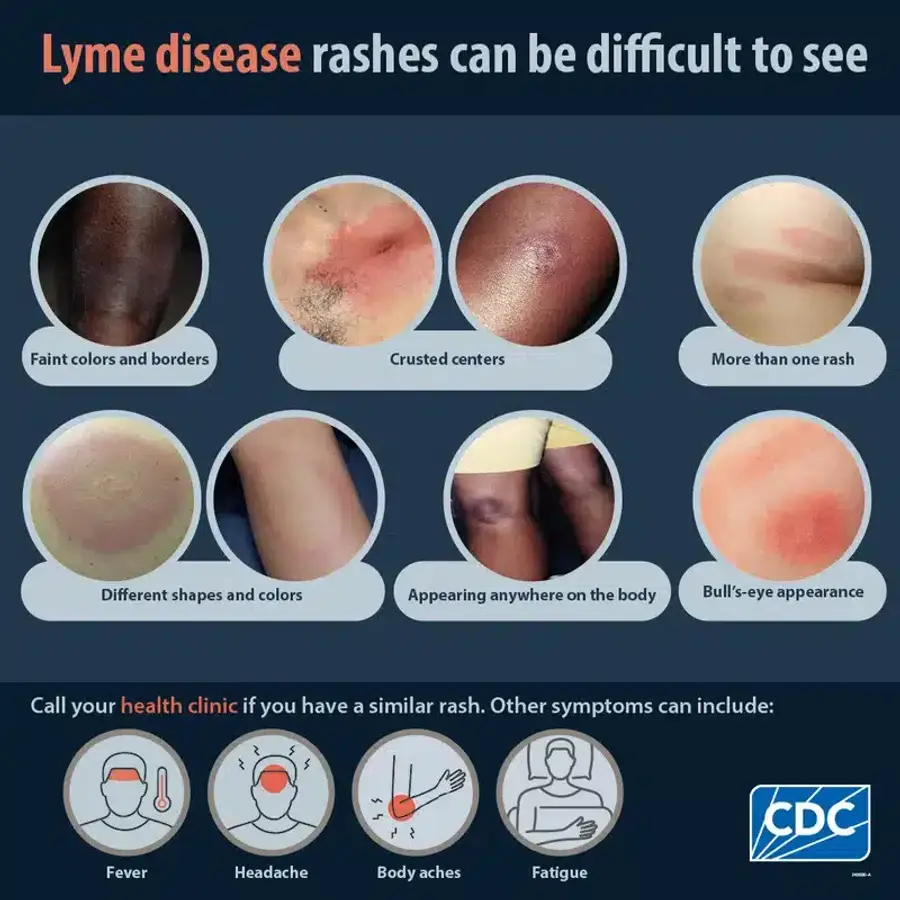
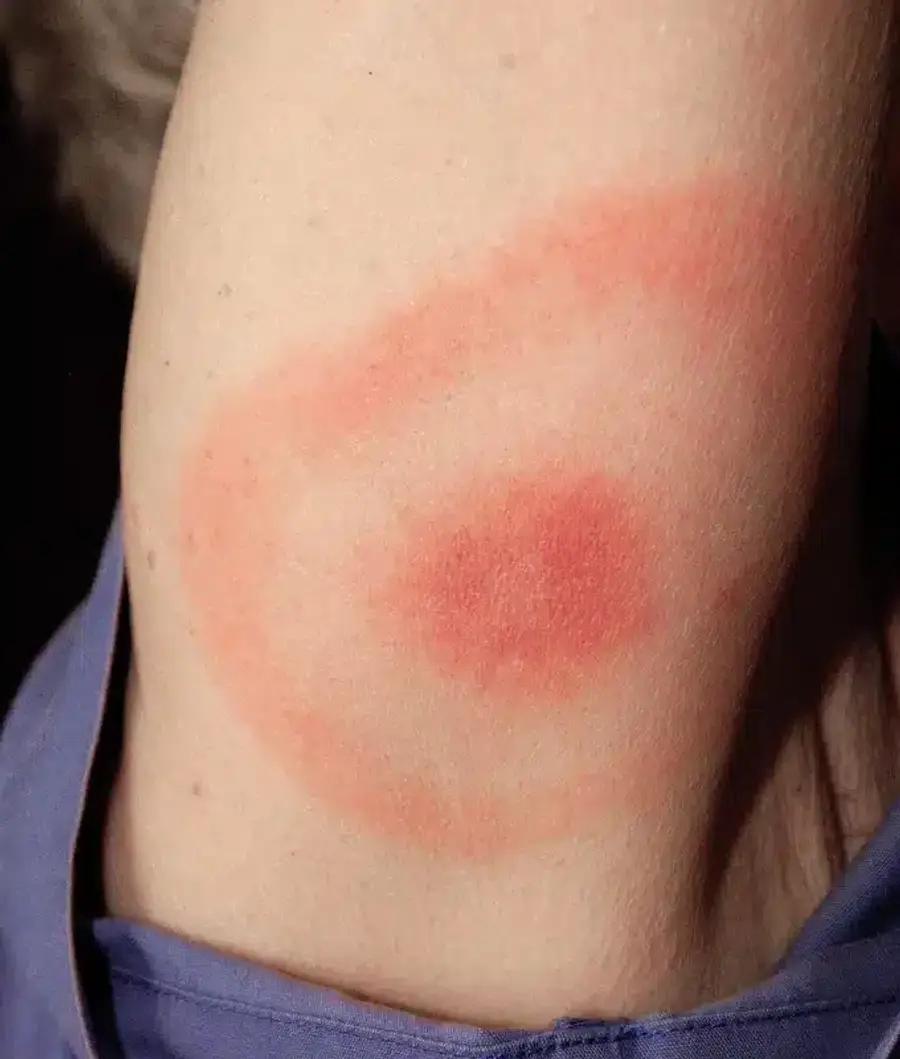
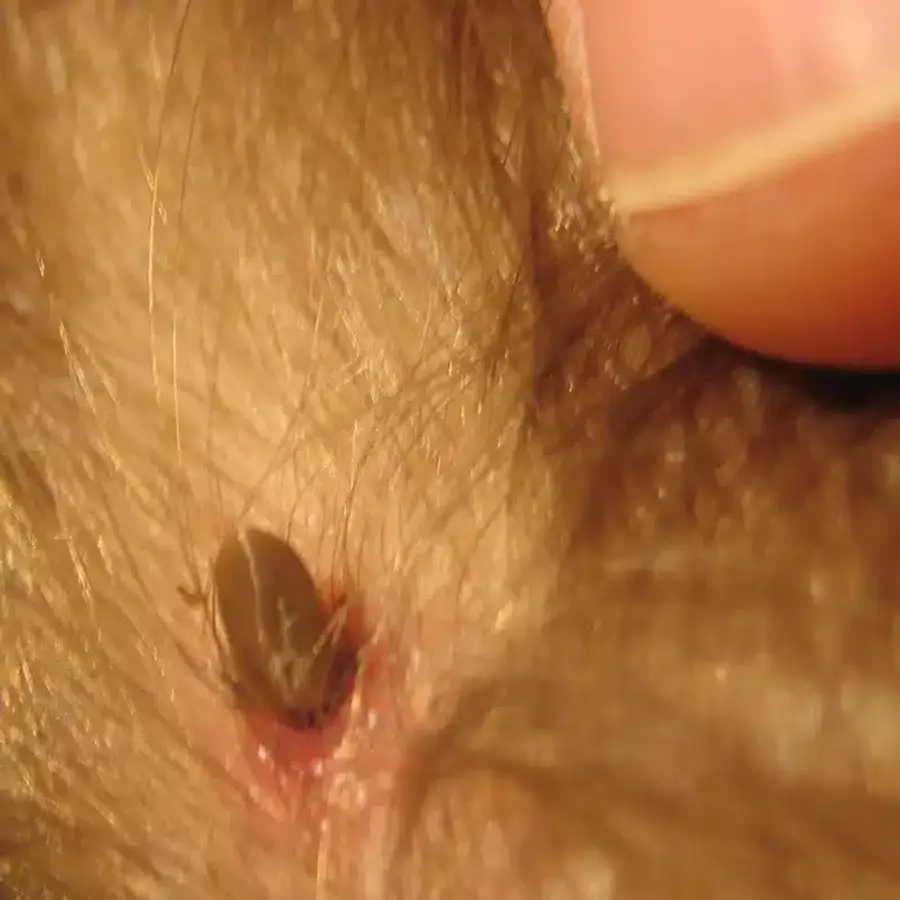
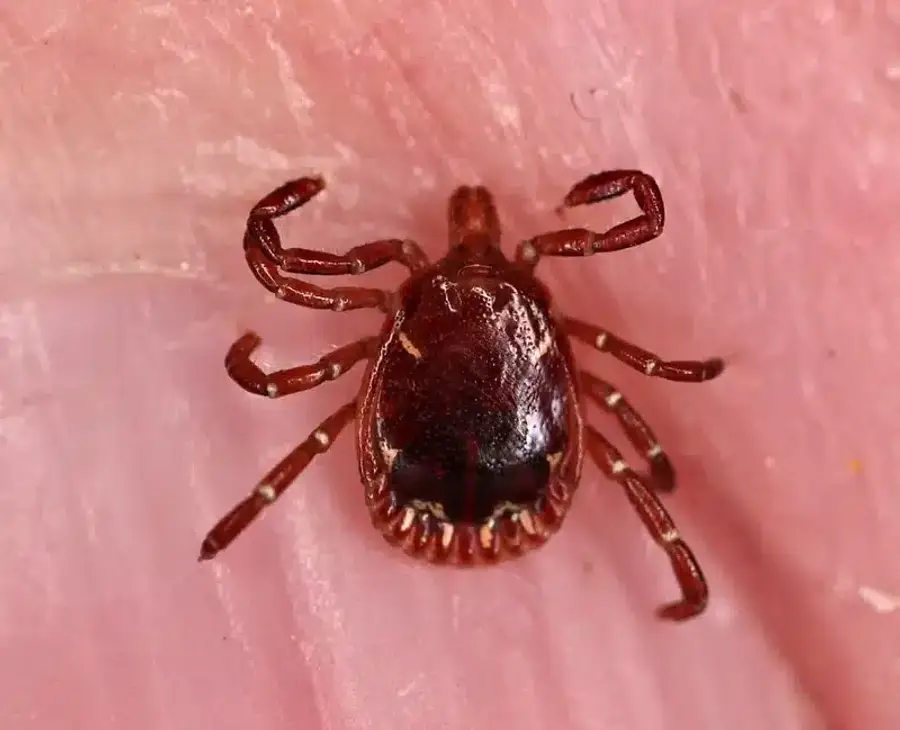
Disease control and prevention relies heavily on avoiding tick bites in the first place. Infected tick saliva can transmit pathogens within 24-48 hours, making quick removal crucial.
Professional Tick Control Solutions
At Better Termite & Pest Control, we’ve developed effective strategies to get rid of ticks around homes and properties. Our SeasonGuard+ program includes targeted granular treatments during spring and fall peak activity periods.
We use Damminix tick tubes as part of our comprehensive approach. These tweezer-shaped cardboard tubes contain permethrin-treated cotton that mice collect for nesting. When young ticks feed on treated mice, the insecticide kills them before they can mature.
Our registered technicians understand kinds of ticks common in the Mid-Atlantic region. We focus treatments on areas where adult ticks and nymphs are most likely to encounter humans and pets.
Companion Animal Protection
Dogs and cats can serve as early warning systems for tick activity around your property. Regular grooming helps you notice they’ve had a tick before diseases transmit. Check for ticks on pets daily during peak season.
Veterinary-approved tick preventatives provide excellent protection for pets. These products kill ticks that attach and bite humans and animals. Additionally, Lyme vaccination helps protect dogs in high-risk areas.
Pet Product Safety
Never apply dog tick products to cats, as this can cause serious poisoning. Cats require specially formulated products designed for feline use.
Emerging Tick Threats
The Asian longhorned tick has recently established populations in Virginia and surrounding states. This invasive tick species reproduces without mating, allowing rapid population growth. While disease transmission from this species is still being studied, heavy infestations can cause serious problems for livestock.
Climate change is extending tick active seasons and expanding their geographic ranges. Ticks can be active year-round in some areas during mild winters. This means area where ticks were previously uncommon may now have established populations.
Tick-borne illness cases continue increasing throughout the Mid-Atlantic region. New pathogens like Heartland virus and Bourbon virus are occasionally detected, though they remain rare.
Professional Assessment and Treatment
After 57 years serving the DC metro area, our family-owned business has seen how tick populations and diseases have changed. We’ve treated over 100,000 homes and understand human-biting ticks patterns in different neighborhoods and property types.
Our approach combines immediate population reduction with long-term prevention and control. Spring treatments target tick carrying disease pathogens before they become adults. Fall applications prevent lyme disease by reducing overwintering adult populations.
The Better Promise includes unlimited callbacks if you see tick activity between scheduled treatments. Because ticks can carry dangerous pathogens, we don’t want you waiting months for the next scheduled service if problems arise.
Ticks are typically most problematic along property edges where maintained landscape meets natural areas. Our technicians identify the tick habitats most likely to produce encounters with people and pets.
Understanding what does a tick look like and recognizing the signs they’ve had a tick bite empowers you to act quickly. However, professional treatment creates the foundation for long-term tick control around your home.
Frequently Asked Questions
How do I know if it's a tick?
+
Look for a small, oval-shaped creature with eight legs and no antennae. Ticks are small but visible to the naked eye, typically dark brown or black in color. They move slowly and tend to crawl upward on clothing or skin. If you find a tick attached to your skin, you'll see its body protruding with the head buried close to the skin.
What can be mistaken for a tick?
+
Several small creatures resemble ticks, including clover mites, spider beetles, and small spiders. However, ticks have distinctive features: they're flatter when unfed, have a hard shield (scutum) on their back, and lack the narrow waist that markings on its back distinguish many spiders. Clover mites are much smaller and more active than ticks.
Is tick harmful to humans?
+
Yes, ticks pose significant health risks because they ticks can carry dangerous pathogens. Diseases like lyme disease, Rocky Mountain spotted fever, and alpha-gal syndrome can all result from tick bites. The risk depends on the tick species, how long it stays attached, and whether the tick feeds on infected wildlife. Early tick removal and monitoring for symptoms of tick-borne illness are crucial.
What does an embedded tick look like?
+
An embedded tick appears as a dark, oval bump protruding from your skin as possible. The tick's mouthparts are buried beneath the surface, while its body remains visible above. You might see slight redness or swelling around the bite site. The tick's size depends on how long it has been feeding - an unfed tick adult will be much smaller than one that has been attached for days.
When should I remove the tick after finding it?
+
Remove the tick immediately upon discovery. Tick-borne disease transmission typically requires 24-48 hours of attachment, so quick removal significantly reduces infection risk. Use a tick removal tool or fine-tipped tweezers to grasp the tick by putting the tweezers as close to your skin as possible and pulling straight up without twisting.
How can I tell what type of tick bit me?
+
Identify ticks by examining the body size, color, and any distinctive markings on its back. Lone star females have a white dot, while american dog tick displays ornate white patterns. Save the removed tick in a sealed container to help healthcare providers identify the tick species if symptoms develop. The CDC's tick identification guide provides detailed photos for comparison.
What should I do if I get a tick-borne disease?
+
If you develop fever, rash, or flu-like symptoms weeks after a tick bite, contact your healthcare provider immediately. Early antibiotic treatment is highly effective for most tick-borne disease cases. Mention your tick exposure and provide details about when and where the bite occurred to help with diagnosis and treatment decisions.
With five years of hands-on experience in the pest control industry, George Schulz is a registered technician with the Virginia Pest Management Association and a proud third-generation professional in a family business that's been protecting homes for over 57 years. He manages and trains a team of service pros while also leading internal research efforts—recently spearheading a deep-dive review of thousands of documents on pest control materials to hand-pick the most kid and pet friendly, most effective solutions tailored specifically for homes in the DC metro area.
